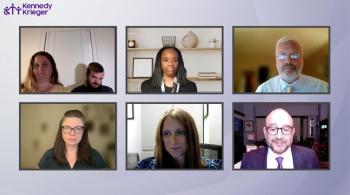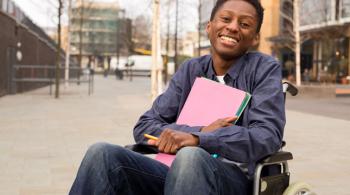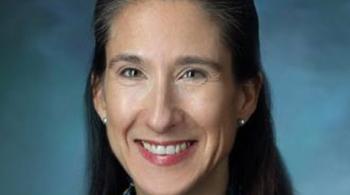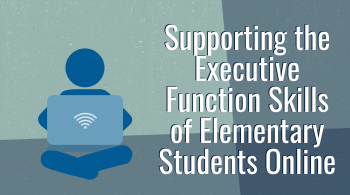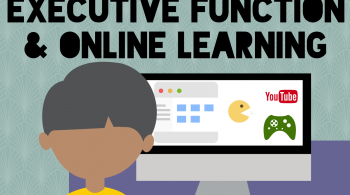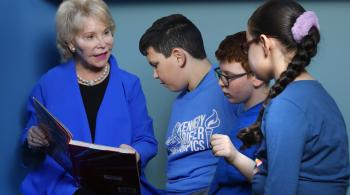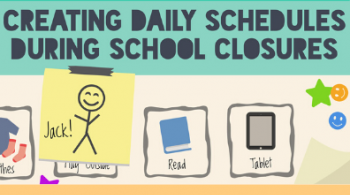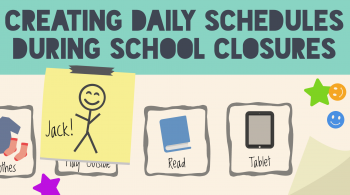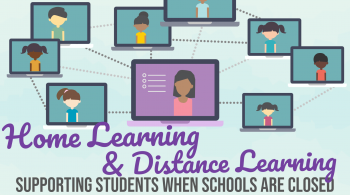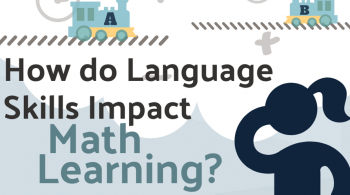September 13, 2016
Lisa Carey, Education Consultant for the Kennedy Krieger Institute Center for Innovation and Leadership in Special Education, interviewed Dr. Jon Mundorf to gain his perspective on learning environment design. Dr. Mundorf is a 7th grade English Language Arts teacher at P.K. Yonge Developmental Research School at the University of Florida, a public school given the responsibility of developing innovative solutions to educational concerns and disseminating successful instructional programs to other school districts. He is internationally recognized as a UDL expert and is listed among CAST’s UDL Professional Learning Cadre.
LC: You are a recognized leader in the field of Universal Design for Learning (UDL)implementation, and also a 7th grade languages arts teacher. What considerations do you make when you are designing or helping someone else to design a learning environment?
JM: It all starts for me with the assumption that learning is an interaction between the individual and the environment. Any kind of learner ability or inability exists in that environment. So when I think about designing learning environments, from the very beginning I’m thinking about setting the stage for where learning happens.
From the outset, the key piece for me is making sure the learning goals are really clear. I need to be very clear about what it is that I want students to know or be able to do.Once that is established, I start thinking about the environment itself. What are the different ways I can make sure that the goals are clear to the learners in that particular space? Once a conversation or thoughts around goals have developed, then the next layer of thinking is about opportunities. Where are the opportunities for flexibility, for options? For example, if the students have a writing goal and I know that the students have to write, I might be thinking about options for scaffolding and the different ways I can help students reach that goal. It all begins with recognizing the importance of the goal, then seeing the critical importance of the space, and then considering the methods and materials that exist within that space.
LC: I find that a lot of teachers start the school year with a certain vision of what their classroom should look like, or how it is going to be laid out. Then, they meet their students and the space turns out not to be functional or conducive for learning for a variety of reasons - the class is larger than expected, students need more space for movement, or the desk arrangement doesn’t lend itself to collaboration. When this happens, I’ve found that some teachers are very hesitant to change up their learning environment. What advice would you give to the teacher that thinks they need to make some changes, but is worried about doing so during the school year?
JM: I will often repeat in my mind the phrase, “Rome wasn’t built in a day.” I have been doing that ever since I learned about UDL. It has really been one of my guiding thoughts about all of this work. I can’t do it all at once. As we think about options and flexibility, it is very crucial that we don’t bite off more than we can chew. As you come across those moments when something is not working as you think it should, you might encounter your own mental barrier, and may start feeling like everything needs to be changed. Start with one option, or a little bit more flexibility. Just try something small, a minor adjustment within the classroom.
You mentioned this idea of what “should” the classroom look like. Rather than thinking of what it could look like, I think teachers often become trapped by this notion of, what should it look like? Rather than what it could look like. I think that’s a piece we need to push on as designers of learning environments - step away from should and move toward the possibilities of could. Just like we want to provide options for our students in the ways that they accomplish goals, it’s important to give ourselves options for how we accomplish our goals. If we have this this thought in our mind of what it should look like, then we fall into the trap of “one size fits all.” ! With Universal Design for Learning, there isn’t just one way to do it. As we think about design in terms of what a learning environment could look like- if we just embedded that slight shift in language – we are already embedding some flexibility. For example, right now with my 7th graders, there are certain structures in the classroom that are working really well and others that aren’t working as well. I recognize that whether it be a collaborative structure to encourage students to interact with each other, or a technology that gives students options to express what they have learned, all of those elements are options, and none of those are standards that I need to accomplish as a teacher. They are just the means I utilize to accomplish the goal.When they aren’t going well, I can be flexible and reconsider my space. A big challenge with this work is that if you have this vision in your mind of what it has to look like, you’ve already created an inflexible learning environment. It might work one way for one class, but that doesn’t mean it’s going to work for every group of students you teach.
LC: I love the idea of “could” versus. “should” for framing design thinking. I think that there are so many ways for teachers to get ideas about designing their classrooms and that there is almost a sort of pressure from social media to have a beautiful room. This focus on aesthetics does not necessarily lend itself to functionality for learning. There is some literature showing that students have improved outcomes when they rate their classroom as comfortable. There is also a lot of recent talk about being culturally responsive in our classrooms. Can you talk about how the physical learning space can make students feel comfortable and respected in their classroom?
JM: I feel like the word “comfort” is one of those loaded words, much like the word “engagement.” When I first started learning about UDL, I thought engagement equated to fun. When we talk about engagement, people automatically envision games and exciting activities. But, as we dive deeper into the concept, we go beyond just having fun and ask ourselves questions like, “Does this work or learning matter? Do students feel motivated by and connected in this work?” I feel like comfort is one of those words that is similarly definitionally-challenged. When we say comfort, we need to be clear that it is more than giving students comfortable chairs or assigning them work that is easy and non- threatening. We want kids to work hard; we need kids to be challenged to think deeply. There is great value in failure as it relates to learning. We want kids to try different approaches and learn from their mistakes along the way. As we think about comfort in the classroom, it’s important that we are also thinking about what that means in terms of creating a space where all students feel welcomed and supported in working hard within a learning community. Developing relationships and demonstrating those relationships within the classroom space is important.T Next is helping students to get to know one another and supporting positive interactions within the classroom.
In terms of cultivating respect and comfort, we talk a lot within our English Language Arts department at the P.K. Youge Developmental Research School that our classroom materials and our curriculum need to include “windows and mirrors” for students. We want kids to discover reading materials and classroom elements that are windows into the world, as well as materials and elements that are mirrors, reflecting for the students their own experiences and cultures. We need to be really intentional about the voices and images we include as we design our environments and lessons.

